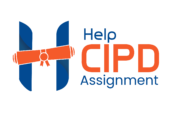Table of Contents
Assessment Questions
Task 1
AC 1.1 Please explain:
a) ‘ethical principles’ and how these can inform the way people behave at work.
b) ‘professional values’ and how these can inform the way people behave at work.
Definition of Ethical Principles
Ethical principles are fundamental rules that help people distinguish between right and wrong. They promote fairness, honesty, and respect in decision-making and behavior. These principles set a moral standard to guide individuals in the workplace and measure their actions.
Example: Equality
Equality means treating everyone fairly, without discrimination based on gender, race, religion, age, or disability. It ensures equal opportunities in hiring, promotions, and workplace treatment (ACAS, 2020). Organizations include equality in their policies to create a fair work culture. For example, hiring managers use structured scoring systems to avoid bias in recruitment. Employees who value equality also ensure that teamwork is inclusive and respectful. This fosters high morale and employee retention by reducing prejudice.
Professional Standards and Their Application
Definition of Professional Values
Professional values are beliefs and standards that guide ethical behavior in a profession. They emphasize competence, accountability, and integrity in decision-making.
Example: Evidence-Based Practice
Evidence-based practice involves using research, data, and professional knowledge instead of assumptions or bias. For instance, an HR professional dealing with high employee turnover should analyze employee satisfaction surveys and exit interviews rather than guess the cause (Boatman, 2023). Leaders who follow this approach encourage continuous learning and research on best practices. This creates a workplace culture that is transparent, fair, and data-driven, where decisions are respected and outcomes are measurable.
AC 1.2 Please give three examples of how you, as a member of the people practice team, conform with the Equality Act 2010 (or any updates), or regulation and law relating to ethics and professional practice in your own country.
In my role within the people practice team, I ensure full compliance with the principles of the Equality Act 2010 and related legislation (GOV.UK, 2010). This includes treating everyone fairly, with dignity and respect. Below are three key ways I put this into practice:
Fair Recruitment Practices
To uphold the principles of the Equality Act 2010, I work to prevent discrimination in the recruitment process. I achieve this by using structured interviews and competency-based assessments to ensure a standardized and objective selection process (ACAS, 2020). These tools evaluate candidates based on merit, competence, and experience, without considering factors such as age, gender, race, or disability. Additionally, I ensure that job advertisements use inclusive language and are widely circulated to attract diverse candidates (ACAS, 2020). By doing so, I create a level playing field for all applicants, fostering trust in the hiring process and promoting diversity within the organization.
Equal Employment Opportunity and Inclusion
I also support workplace equality by developing and implementing policies that prevent discrimination and harassment. These policies are regularly reviewed and updated to align with legal requirements and best practices (CIPD, 2022). Additionally, I assist management in providing diversity and inclusion training, including unconscious bias awareness. These programs help employees and managers understand their roles in fostering a respectful and inclusive workplace. If any incidents or grievances arise, I ensure they are handled fairly and respectfully, providing necessary support to affected individuals. This proactive approach creates a safe and inclusive work environment for all employees.
Providing Reasonable Adjustments
Supporting employees with disabilities is another way I ensure compliance with the Equality Act 2010. I work closely with employees and their managers to implement necessary accommodations, such as adaptive technologies, workspace modifications, and flexible work arrangements. These adjustments help employees perform their tasks effectively without unnecessary barriers. By addressing the diverse needs of employees, I contribute to a more inclusive workplace where everyone feels valued and supported.
AC 2.1 Please summarise different ways people practitioners can demonstrate respectful and inclusive working in relation to:
a) contributing views and opinions
b) clarifying problems or issues
c) working effectively as part of a team
Contributing Views and Opinions
People professionals can promote respect and inclusivity in the workplace by encouraging everyone to participate in discussions. This means creating an environment where all team members feel comfortable expressing their views (Indeed Editorial Team, 2020). For example, during meetings, they can invite input from quieter colleagues who may be hesitant to speak up. Encouraging diverse perspectives fosters inclusivity and ensures all voices are valued.
When sharing their own opinions, people professionals should use inclusive language that does not dismiss or alienate others. Active listening is also essential—acknowledging different viewpoints and asking follow-up questions helps demonstrate respect and understanding. By listening attentively and considering all contributions, people professionals create a positive and inclusive work environment.
Clarifying Problems or Issues
When addressing problems or concerns, people professionals should ensure that everyone involved has a chance to share their perspective. Asking open-ended questions like, “What challenges have you faced?” helps gather a range of insights.
Active listening is key to understanding issues clearly. People professionals can paraphrase what others have said and ask for further details if needed. It’s also important to create a safe space where individuals feel comfortable expressing themselves. By fostering open communication, people professionals facilitate better problem-solving while ensuring all voices are heard and respected.
Working Effectively as Part of a Team
People professionals can support teamwork by fostering a collaborative and inclusive work environment. This includes recognizing every team member’s contributions and ensuring that everyone has the opportunity to share their ideas.
They can also organize team-building activities that cater to different personalities and communication styles. In cases of conflict, people professionals should act as neutral facilitators, allowing all parties to express their concerns fairly (CIPD, 2022).
Creating a workplace culture based on respect and trust enhances teamwork and boosts employee commitment. By promoting empathy and cooperation, people professionals help teams work together effectively while valuing each member’s contributions.
AC 2.2 Please provide three recommendations for how people practice team members can find out about current issues and developments in the world of work and people practice.
Networking with Other People Professionals
Networking is an essential way for people professionals to stay informed about current workplace trends and developments. It provides a platform to share knowledge, exchange experiences, and explore different perspectives on emerging issues (MBO Partners, 2019). Networking can take many forms, such as attending HR conferences, becoming a CIPD member, or joining LinkedIn groups.
For example, professionals can participate in local HR meetups or online forums where practitioners discuss challenges and solutions in the field (Bartram, 2022). These spaces offer valuable insights, including articles and case studies. Networking also fosters mentorship opportunities, allowing experienced professionals to guide and support newcomers.
Effective networking involves active listening, asking relevant questions, and offering solutions (Cuncic, 2024). By building meaningful connections, people professionals can stay updated on industry changes, such as new legislation, technological advancements, and evolving employee needs. Ultimately, networking promotes a collaborative learning environment that drives innovation.
Attending Workshops and Seminars
Workshops and seminars are excellent sources of information on workplace trends (Van Vulpen, 2020). These structured learning events cover topics like technological advancements, employment law changes, and new HR practices. They often include interactive components such as case studies and group discussions, providing practical insights into workplace challenges.
For instance, a people professional might attend a seminar on employee engagement in remote and hybrid work models. Such events typically feature expert presentations on research, best practices, and case studies. Workshops may also introduce new tools, like digital platforms for managing remote teams or strategies for improving diversity and inclusion (Voltage Control, 2024).
To make the most of these events, participants should actively engage by asking questions, taking notes, and reflecting on how they can apply the knowledge to their organizations. Beyond learning, these events also create opportunities to connect with professionals facing similar challenges.
Researching HR Trends and Industry Developments
Keeping up with HR trends and industry developments is crucial for effective hiring, career planning, compensation, and training (Man Pradhan & Shrestha, 2022). Research methods include reviewing professional journals, trade magazines, and blogs for new insights and case studies.
For example, an article in People Management might discuss how AI is transforming recruitment or how economic instability affects employee well-being. Subscribing to newsletters and podcasts from leading HR researchers can provide easily accessible and relevant updates (CIPD, 2023).
Research also involves analyzing reports from organizations like CIPD, which offer insights into workforce trends and their impact on HR practices. Studying competitors’ strategies can also inspire innovative approaches.
To be effective, people professionals should set aside dedicated time for research and use trusted sources that align with their organization’s needs. This helps them identify trends, anticipate changes, and implement proactive strategies. Continuous learning ensures they remain prepared for evolving workplace challenges.
TASK 2
AC 2.3 Briefly explain how people practitioners can be proactive in their approach to continued professional development (CPD), using your own approach as an example.
People professionals can take a proactive approach to Continuous Professional Development (CPD) by setting clear goals, seeking learning opportunities, and reflecting on their progress. This can include attending industry seminars, earning certifications, and collaborating with experts. By continuously learning, they stay prepared for new challenges, enhance their contribution to organizational goals, and support both personal and professional growth.
CPD Record
| NAME: | CIPD MEMBERSHIP NUMBER: | ||
| COVERING THE DATES FROM: | January 2024 | TO: | November 2024 |
CPD Activities
| Date(s) | Activity Undertaken and Why | What Did I Learn? | Reflection | Future Learning Needs |
| January 2024 | Completed a CIPD certification course on advanced HR management and strategy to improve workforce planning skills. | Gained knowledge on aligning HR strategy with organizational goals and HR data analysis. | Practiced workforce planning using data, realizing that an analytical approach is key to effective HR decisions. | Plan to deepen my knowledge in HR analytics and data interpretation. |
| March 2024 | Attended seminars on modern HR technologies to learn about automation and digital HR processes. | Learned about recruitment tools, automation, performance management, and employee engagement systems. | Helped implement automation tools in the workplace, improving efficiency in HR processes. | Explore advanced certifications in HR technology to enhance technical expertise. |
| June 2024 | Completed a course on unconscious bias to improve diversity and inclusion in workplace decisions. | Gained understanding of unconscious bias and strategies to promote a diverse and inclusive work environment. | Initiated bias awareness training for colleagues, creating a more inclusive organizational culture. | Conduct further research on systemic bias and how to address it in organizational policies. |
| August 2024 | Engaged in professional HR forums and read HR blogs to stay updated on trends like remote work and employee retention. | Discovered practical approaches to flexible working and enhancing employee satisfaction. | Successfully introduced hybrid-working policies, boosting team morale and productivity. | Continue participating in professional networks to stay informed on best practices. |
| November 2024 | Attended a workshop on employee well-being and mental health to support workplace wellness initiatives. | Learned strategies for promoting mental health, such as flexible working, open communication, and support resources. | Developed a tailored well-being initiative, improving employee morale and engagement. | Explore tools to measure the effectiveness of well-being programs. |
References
ACAS (2020). Discrimination, bullying and harassment | Acas. [online] Acas.org.uk. Available at: https://www.acas.org.uk/discrimination-bullying-and-harassment [Accessed 17 Jan. 2025].
Bartram, F. (2022). Top 18 HR Podcasts Of 2025. [online] People Managing People. Available at: https://peoplemanagingpeople.com/articles/hr-podcasts/ [Accessed 17 Jan. 2025].
Boatman, A. (2023). What is Evidence-Based HR? Examples, Benefits, and Process. [online] AIHR. Available at: https://www.aihr.com/blog/evidence-based-hr/ [Accessed 17 Jan. 2025].
CIPD (2023). What Is Continuing Professional Development (CPD). [online] CIPD. Available at: https://www.cipd.org/en/learning/cpd/about/ [Accessed 17 Jan. 2025].
CIPD (2022). Diversity and Inclusion in the Workplace | Factsheets. [online] CIPD. Available at: https://www.cipd.co.uk/knowledge/fundamentals/relations/diversity/factsheet#gref [Accessed 17 Jan. 2025].
CIPD (2022). Ethical Practice and the Role of HR | Factsheets | CIPD. [online] CIPD. Available at: https://www.cipd.co.uk/knowledge/culture/ethics/role-hr-factsheet. [Accessed 17 Jan. 2025].
Cuncic, A. (2024). 7 Active Listening Techniques for Better Communication. [online] Verywell Mind. Available at: https://www.verywellmind.com/what-is-active-listening-3024343 [Accessed 17 Jan. 2025].
GOV.UK (2010). Equality Act 2010. [online] Legislation.gov.uk. Available at: https://www.legislation.gov.uk/ukpga/2010/15/contents [Accessed: 8 November 2023].
Indeed Editorial Team (2020). 15 Ethical Principles in Business (With Definitions). https://www.indeed.com/career-advice/career-development/ethical-principles-in-business#:~:text=Ethical%20principles%20in%20business%20are%20the%20moral%20standards%20set%20by,business%20operates%20in%20the%20community. [Accessed 17 Jan. 2025].
MBO Partners (2019). 5 Ways to Keep Your Job Skills and Knowledge Current | MBO Partners. [online] MBO Partners. Available at: https://www.mbopartners.com/blog/how-manage-small-business/how-to-keep-your-skills-and-knowledge-current-and-why-it-matters1/ [Accessed 17 Jan. 2025].
Man Pradhan, G. and Shrestha, P. (2022). Impact of Training & Development and Career Planning on Employee Involvement. Journal of Balkumari College, 10(1), pp.13–18. doi:https://doi.org/10.3126/jbkc.v10i1.42086.
van Vulpen, E. (2020). Top 10 HR Trends for 2021 and Beyond. [online] AIHR. Available at: https://www.aihr.com/blog/hr-trends/ [Accessed 17 Jan. 2025].
Voltage Control (2024). Enhancing Collaboration in Remote and Hybrid Teams: Strategies for Success. [online] Voltage Control. Available at: https://voltagecontrol.com/articles/enhancing-collaboration-in-remote-and-hybrid-teams-strategies-for-success/ [Accessed 17 Jan. 2025].
Related Articles:



